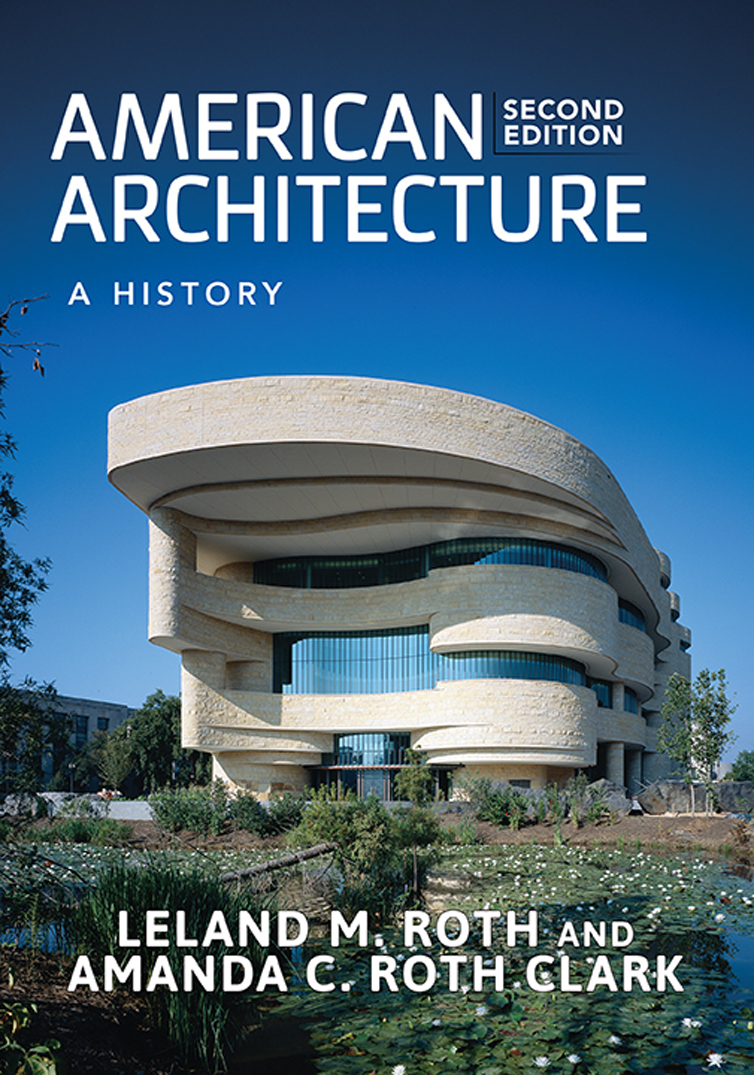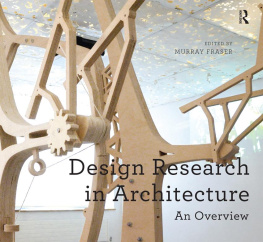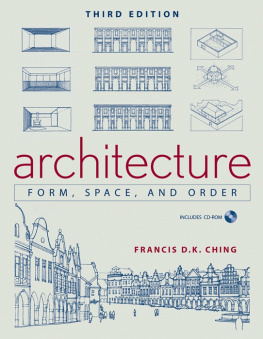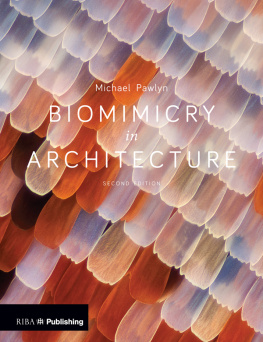


Westview Press was founded in 1975 in Boulder, Colorado, by notable publisher and intellectual Fred Praeger. Westview Press continues to publish scholarly titles and high-quality undergraduate- and graduate-level textbooks in core social science disciplines. With books developed, written, and edited with the needs of serious nonfiction readers, professors, and students in mind, Westview Press honors its long history of publishing books that matter.
Copyright 2016 by Leland M. Roth and Amanda C. Roth Clark
Published by Westview Press,
A Member of the Perseus Books Group
2465 Central Avenue
Boulder, CO 80301
www.westviewpress.com
All rights reserved. Printed in the United States of America. No part of this book may be reproduced in any manner whatsoever without written permission except in the case of brief quotations embodied in critical articles and reviews.
Every effort has been made to secure required permissions for all text, images, maps, and other art reprinted in this volume.
Westview Press books are available at special discounts for bulk purchases in the United States by corporations, institutions, and other organizations. For more information, please contact the Special Markets Department at the Perseus Books Group, 2300 Chestnut Street, Suite 200, Philadelphia, PA 19103, or call (800) 810-4145, ext. 5000, or e-mail .
Designed by Trish Wilkinson
Set in 9.5 point Goudy Old Style
Library of Congress Cataloging-in-Publication Data
Roth, Leland M., author.
American architecture: a history / Leland M. Roth, Amanda C. Roth Clark. Second edition.
pages cm
Includes bibliographical references and index.
ISBN 978-0-8133-5007-3 (e-book) 1. ArchitectureUnited StatesHistory. I. Clark, Amanda C. Roth, author. II. Title.
NA705.R669 2016
720.973dc23
2015033799
10 9 8 7 6 5 4 3 2 1
To Carol, Who Makes Everything Possible
Table of Contents
Guide
Contents
Chapter 1: The First American Architecture
Chapter 2: Europeans in the New World, 16001700
Chapter 3: In the Latest Fashion, 16901785
Chapter 4: A New Architecture for a New Nation, 17851820
Chapter 5: Appropriation and Innovation, 18201865
Chapter 6: Architecture in the Age of Energy and Enterprise, 18651885
Chapter 7: The Architecture of the American City and Suburb, 18851915
Chapter 8: Nostalgia and the Avant-Garde, 19151940
Chapter 9: The Emergence of American Modernism, 19401973
Chapter 10: Late Modernism and Alternatives, 19722001
Chapter 11: Looking at the Future: Into the Twenty-First Century
Glossary
A rchitecture, in large part, is shaped in its appearance and its construction by the place in which it is built. Yet even in ancient times in the Old World, building materials from distant locations could be used in construction. Furthermore, in the modern industrial era, the availability of inexpensive and seemingly inexhaustible energy often persuaded architects and their clients to defy natural constraints. In contrast, for indigenous Americans, in addition to cultural determinants deriving from their creation stories and religious life, the availability of local materials fundamentally determined how they built their dwellings and their ceremonial shelters from time immemorial.
When European explorers first set foot on the North American continent and built their own shelters, fortifications, and places of worshipeven though they attempted to build in terms of what they remembered from their various homelandsthey had to make do with local raw materials and the limitations of mostly unskilled labor, thus subtly altering the models the European settlers held in their memory. The colonists buildings gradually became recognizably different from the prototypes from home they tried to emulate, and a new American architecture was the result. Once the new independent nation was created, the impulse to establish an architecturally independent identity became an important stimulus.
Origins of the First Edition of American Architecture: A History
My original Concise History of American Architecture was created during the latter 1970s at the request of Brenda Gilchrist, an editor at Praeger Publishers. She sought essays intended as component chapters in a comprehensive text on the American arts, encompassing painting, sculpture, decorative arts, and photography. When she approached Vincent Scully, he instead most kindly suggested she contact me. When Praeger ceased to exist, Cass Canfield Jr., at Harper & Row, eagerly undertook to publish my expanded section on American architecture as a separate volume. The resulting Concise History originally appeared in 1979, and about eight years later, Canfield suggested I revise and update the book. But other projects intervened, not least of which was my completing Understanding Architecture, published by HarperCollins in 1993 (the third edition recently published by Westview Press, 2014). What was begun in 1987 as a slightly amended and enriched new edition of Concise History gradually grew to become a completely new book, almost double the original length and with twice as many illustrations and plans. Reflecting this new scope under a new title, the first edition of American Architecture: A History (2001) was lovingly and carefully shepherded through the production process and would be my last project done directly with Cass Canfield.
In the original book, I suggested a parallel between building and politics, for both are based on the fine art of compromise. Every building represents a judicious balance between conflicting needs and aspirations on the part of client, architect, and builder. In the United States, there has been, from the first arrival of European settlers and builders, a divergent tension between satisfying pressing physical needs and expressing transcendent cultural aspirations, between the impulse to build pragmatically and efficiently, on the one hand, and the longing to physically encapsulate a conceptual ideal, on the other. The essence of this idea was expressed in 1911 by American philosopher George Santayana in an address given at the University of California:
America... is a country with two mentalities [he observed], one a survival of the beliefs and standards of the fathers, the other an expression of the instincts, practice, and discoveries of the younger generations.... [O]ne-half of the American mind, that not occupied intensely in practical affairs, has remained, I will not say high-and-dry, but slightly becalmed; it has floated gently in the back water, while, alongside, in invention and industry and social organization the other half of the mind was leaping down a sort of Niagara Rapids. This division may be found symbolized in American architecture: a neat reproduction of the colonial mansionwith some modern comforts introduced surreptitiouslystands beside the skyscraper. The American Will inhabits the sky-scraper; the American Intellect inhabits the colonial mansion.... The one is all aggressive enterprise; the other is all genteel tradition.
This account of American architecture shows the struggle to find this precarious balance between the real and the ideal. The settlers came to the New World in the beginning driven by idealism, to find a measure of social or economic perfection, and yet they soon discovered they had to shelter themselves in the most rudimentary mannerand the conflict between the ideal and the real has continued from that time to the present.
Next page










